What is Engineering safety
safety engineering is provide to protective work culture and control of workplace accident that may cause worker injuries or disorders
Read more
We'd like to send you notifications of the latest posts and updates.
| Sr.No | Name | Meaning |
|---|---|---|
| 1 | Absolute humidity | The amount of water vapour present in the atmosphere, defined in terms of number of kilograms (or grams) of water in one cubic metre of air. The relative humidity is usually expressed as a percentage, the ratio of the pressure of the water vapour actually present in the atmosphere to the pressure of the vapour that would be present if the vapour was saturated at the same temperature. |
| 2 | Activated | Carbon Charcoal treated to remove hydrocarbons and to increase its powers of absorption. Used in many processes for recovering valuable materials out of gaseous mixtures, as a deodorant, and in & as masks. |
| 3 | Acute Effect | Immediate effect (Acid burn, Ammonia or Chlorine inhalation) . |
| 4 | Addition compound | A chemical compound formed by the addition of an atom to a; molecule, e.g. phosgene Co+Cl2 = CoCl2. |
| 5 | Acid | A compound which yields hydrogen ions in solution. |
| 6 | Activity | Ease of undergoing chemical change. |
| 7 | Alloy | Metallic solid resulting from dissolving two or more molten metals in each other, possessing properties different from any of its constituents. |
| 8 | Amalgam | An alloy of a metal and mercury. |
| 9 | Analysis | The determination of the composition of a substance; the decomposition of a substance. |
| 10 | Atom | The smallest quantity of an element that enters into chemical combination. It has a very small, dense nucleus, positively charged. Negative particles called electrons rotate around the nucleus. |
| 11 | Aero metal | A casting alloy of AI, Zn and Cu. |
| 12 | Affinity | Chemical attraction, the force binding atoms together. |
| 13 | Alkali | A soluble hydroxide of a metal, particularly the alkali metal. Alkali metals-univalent metals lithium, sodium, potassium, rubidium, and caesium (Group IA of the periodic table). Alkaline earth metals bivalent metals beryllium, magnesium, calcium, strontium, barium and radium (Group 2A of the table). |
| 14 | Alcoholates | Metallic salts of alcohol, formed by replacement of hydrogen atoms in, the hydroxyl groups of the latter by metals e.g. sodium ethanolate C2H5ONa. |
| 15 | Alcohol | A class of organic compounds derived from the hydrocarbons, one or more hydrogen atoms in molecules of the latter being replaced by hydroxyl groups - e.g. ethanol C2H5OH . |
| 16 | Aldehydes | A class of organic compounds of the type R.CO.H where R is an alkyl or aryl radical. |
| 17 | Alicylic compound | A type of organic compound that is essentially aliphatic, although it, contains a saturated ring of carbon atoms. |
| 18 | Aliphatic compounds | Organic compounds containing open chains of carbon atoms, in contradistinction to the closed rings of carbon atoms of the aromatic compounds. |
| 19 | Aromatic compounds | The original concept of aromatic compounds as derivatives of benzene has been extended to certain other organic compounds. |
| 20 | Alkaloids | A group of basic organic substances of plant origin, containing at least one nitrogen atom in a ring structure in the molecule. Many have important physiological actions and are used in medicine, e.g. codeine, cocaine, nicotine, quinine, morphine. |
| 21 | Alkanes | A homologous series of saturated' hydrocarbons having the general formula Cn2n+2. They are chemically inert, stable and inflammable. The first four members of the series (methane, ethane, propane, butane) are gases at ordinary temperatures, the next eleven are liquids and form the main constituents of paraffin oil, the higher members are solids. |
| 22 | Alkenes Olefins, | A homologous series of unsaturated hydrocarbons having .the general formula CnH2n. |
| 23 | Alkynes | A homologous series of unsaturated hydrocarbons having the general formula CnH2n-2 and containing a triple bond between two of the carbon atoms in the molecule, e.g. acetylene. |
| 24 | Aklylarene | An arene (e.g. benzene) with one or more hydrogen atoms in the I molecule replaced by alkyl groups, e.g. ethylbenzene. |
| 25 | Amides | A group of organic compounds formed by replacing hydrogen atoms of ammonia NH3 by radicals, e.g. acetamide CH3CONH2. The general formula is RCONH2 where CONH2 is the amide group. |
| 26 | Amines | Compounds formed by replacing hydrogen atoms of ammonia NH3 by organic radicals. Classified into primary amines of the type NH2R1 secondary NHR2 and tertiary NR3. |
| 27 | Amorphous | Non-crystalline, having no definite ;form or shape. |
| 28 | Amphoteric | Chemically reacting as acidic for strong bases and as basic towards strong acids, e.g. amphoteric oxide, zinc oxide, gives rise to zinc salts of strong acids and zincates of the alkali metals. |
| 29 | Anhydride | The anhydride of a substance is that which when chemically combined with water, gives that substances. A basic anhydride is the oxide of a metal and forms a base with water (Na2O+H2O = 2NaOH), and acidic anhydride is the oxide of a nonmetal and forms an acid with water (SO2+H2O)=H2SO4). |
| 30 | Anhydrite | A naturally occurring form of calcium sulphate . |
| 31 | Anhydrous | Without water, often applied to salts without water of crystallization. |
| 32 | Base metals | In contradistinction to the noble metals, metals that corrode, tarnish or oxidise on exposure to air, moisture or heat. |
| 33 | Binary compound | A chemical compound of two elements only. Denoted by the suffix- ide, e.g. calcium carbide CaC2. |
| 34 | Base | The hydroxide of a metal. An alkali. |
| 35 | Boiling | Point The temperature at which the pressure of the vapour of a substance equal that of its surrounding, atmosphere. |
| 36 | Boiling | Ebullition. The state of a liquid at its boiling point when the maximum vapour pressure of the liquid is equal to the external pressure to which the liquid is subject, and .the liquid is freely converted into vapour. Boiling point is the temperature at which the liquid boils freely under standard atmospheric pressure i.e. 760 mm of Hg. |
| 37 | Carbocyclic | Compounds A class of organic compounds containing closed rings of carbon atoms in their molecules. It includes alicyclic (e.g. cyclohexane) and aromatic (e.. benzene) compounds. |
| 38 | Carbohydrates | A large group of organic compounds composed of carbon, hydrogen and oxygen only with general formula Cx ( H2O)y. |
| 39 | Carcinogen | A substance capable of producing cancer (carcinoma). |
| 40 | Caustic | Corrosive towards organic matter (but not applied to acids), e.g. caustic soda, caustic alkali-sodium or potassium hydroxide, caustic potash - KOH, caustic soda - NaOH. |
| 41 | Celluloid | A thermoplastic material made from cellulose nitrate and camphor. |
| 42 | Cellulose | A polysaccharide that occurs widely in nature in fibrous form as the structural tissue in the cell walls of plants. |
| 43 | Chemical change | A change m a substance involving an alteration in its chemical composition, due to an increase, decrease or rearrangement of atoms within its molecules. |
| 44 | Chemical energy | That part of the energy stored within an atom or molecule that can be released by a chemical reaction. |
| 45 | Chloracne | A disfiguring skin disease that is caused by certain chlorinated aromatic hydrocarbons. It can result from contact, ingestion or inhalation of the chemicals. |
| 46 | Chromophore | Any chemical group, such as the azo group, that causes a compound to have a distinctive colour. |
| 47 | Chronic | Effect Effect after prolonged exposure (poisoning due to lead, chromium, j mercury etc.) |
| 48 | Coalgas | Fuel gas manufactured by the destructive distillation of coal in closed iron retorts, often' supplemented with watergas or natural gas. Coal-tar is a thick black oily liquid obtained as a by-product of coal- gas manufacture. Coke is a greyish porous brittle solid i containing @ 80% carbon. Obtained 'as a residue in the manufacture of coal-gas (gas-coke), also made specially in coke ovens, in which the coal is treated at lower temperatures ;than in pas manufacture. |
| 49 | Corrosive | Liquids Acid, Alkalis, Ammonia liquor, iCarbamate solution, caustic solution, amines etc. |
| 50 | Critical pressure, | Critical pressure is the pressure of the saturated vapour of a substance temperature and volume at the critical temperature, above ; which a gas cannot be liquefied by pressure alone. Critical volume is 'the volume occupied by unit mass of a substance at its critical; temperature and critical pressure. |
| 51 | Critical Velocity | The velocity at which the flow of a liquid ceases to be streamlined and becomes turbulent. |
| 52 | Crystals | A solid in which the particles (molecules, atoms, ions) are arranged in a definite patter in space. |
| 53 | Cryostat | A vessel in which a specified low temperature may be maintained. |
| 54 | Culture medium | A preparation used for growing and cultivating micro-organisms for experimental purposes. |
| 55 | Deliquescent | Having the property of picking up moisture from the air to such an extent as to dissolve in it, becoming liquid on exposure to air. |
| 56 | Density | The mass of unit volume of a substance, e.g. kg/m3 . |
| 57 | Derivative | A compound derived from (but not necessarily prepared from) some other compound, usually retaining the general structure of the parent compound, e.g. nitrobenzene C6H5NO3 is a derivative of benzene C6H6, one hydrogen atom in the molecule of the latter being replaced by a nitro group. |
| 58 | Detergents | Cleaning agents, products used in solution for washing or cleaning by action other than simple dissolution, usually with the aid of surface- active agents. Unlike soaps, they are effective in hard water and do not form a scum. |
| 59 | Decomposition | The process of breaking down a substance into a simpler one. |
| 60 | Deliquescence | The absorption of water from the air by a substance to the extent that the substance is dissolved in the absorbed water. |
| 61 | Desiccant | Drying agent absorbs moisture from its surroundings. |
| 62 | Distillate | The condensed liquid obtained by a distilling process. |
| 63 | Diazo | Compounds Like azo compounds, diazo compounds contain two adjacent nitrogen atoms which may form and azo group, but only one is attached I to a carbon atom e.g. diazomethane CH2=N |
| 64 | Diazonium | Compounds Organic compounds of the general formula RN2X, where R is an aryl radical, RN2 is a cation and X is an anion. |
| 65 | Dihydric | Containing two hydroxyl groups in a molecule, e.g. a diol. |
| 66 | Dyes | Coloured substances that can be fixed firmly to a material to be dyed so as to be more or less fast to water, light and soap. Types - acid Idyes, azo dyes, direct dyes, mordents, vat dyes. |
| 67 | Electrode | The plate or terminal of an electric system. |
| 68 | Electrolyte | A substance which will conduct a current when melted, or in solution. A substance decomposable by an electric current. |
| 69 | Electron | A constituent of an atom possessing a unit negative electrical charge and having negligible mass from a chemical point of view. |
| 70 | Element | The simplest form of matter. |
| 71 | Energy | The ability to do work. All changes involve loss or gain of energy. |
| 72 | Equation | A concise statement of a chemical reaction using the symbols and formula of the reactants and products. |
| 73 | Equilibrium | Condition in which two processes proceed simultaneously in opposite Directions at the same rate. |
| 74 | Emulsion | A two-phase system in which the disperse phase consists of minute droplets of liquid . |
| 75 | Enthalpy | Heat content H. A thermodynamic property of a substance given by H, == U+pV, where U is the internal energy, p the pressure, and V the volume. |
| 76 | Entropy | S. A quantity introduced in the first i place to facilitate the calculations and to give clear expression to the! results of thermodynamics. |
| 77 | Enzyme | A large group of proteins produced by living cells, which act as catalysts in the chemical reactions upon which life depends. |
| 78 | Ergonomics | The engineering aspects of the study .of the relation between human workers and their working environment. |
| 79 | Esters | Organic compound's corresponding to inorganic salts, derived by replacing hydrogen of an acid by an organic radical or group e.g. ethyl acetate CH3COOC2H5 is the ethyl ester of acetic acid CH2COOH. |
| 80 | Ethers | A group of organic compounds with the general formula R-O-R' formed by the condensation of two alcohol molecules. |
| 81 | Explosion | A violent and rapid increase of pressure in a confined space. It may be caused by an external source of; energy (heat) or by an internal exothermic reaction in which: relatively large volumes of gases areproduced. |
| 82 | Explosives | Substances that undergo a rapid chemical change with production of gas on being, heated or struck . |
| 83 | Fatigue of Metals | The deterioration of metals owing to repeated stresses above a certain critical value, it is accompanied by changes in the crystalline structure of the metal. |
| 84 | Filtrate | The liquid obtained after filtration. |
| 85 | Flux | Material which permits another substance to melt more easily. |
| 86 | Formula | The composition of a substance indicated by symbols of each element present and subscript numbers showing the number of each type of atom involved. |
| 87 | Freezing | Point Temperature at which a liquid changes to a solid. |
| 88 | Fertilisers | Materials put into 'the soil to; provide compounds of elements essential to plant life more I particularly nitrogen, phosphorus and potassium. |
| 89 | Fire | A chemical reaction accompanied by the evolution of heat, light and flame (i.e. a glowing mass of gas). It is generally applied to the chemical combination with oxygen 'of carbon and other elements' constituting the substance being burnt. |
| 90 | Flammable | Substances with flash point < 80 °FJ i Those having P.P. > 80 °F are called' combustibles. Flash Point The lowest temperature at which a I substance gives off sufficient inflammable vapour to produce a momentary flash when a small flame is applied. |
| 91 | Flue | Gas The gaseous products of combustion from a boiler furnace consisting predo-minantly of CO2, CO, O2, N2 and steam. Analysis of the flue ~ gases is used to check the efficiency of the furnace. |
| 92 | Fluid | A substance that takes the shape of the shape of the vessel containing it, a liquid or gas. |
| 93 | Fuel | A substance used for producing heat energy, either by means or the release of its chemical energy by combustion or its nuclear energy by nuclear fission. |
| 94 | Fungicide | A substance capable of destroying I harmful fungi, such as moulds and mildews. |
| 95 | Gas | A substance whose physical state (the gaseous state) is such that it always occupies the whole of the ; space in which it is contained. |
| 96 | Gas | Mask Respirator a device for protecting the face and breathing organs against poisonous gases. Germicide A substance capable of destroying bacteria. |
| 97 | Halide | A binary compound of one of the halogen elements (fluorine, chlorine, bromine or iodine), a salt of the hydride of one of these elements. |
| 99 | Heat | Energy possessed by a substance in the form of kinetic energy of atomic or molecular translation, rotation or vibration. The heat contained by a body is the product of its mass, temperature and specific heat capacity. It is expressed in joules, calories or B.Th. U. Heat is transmitted by conduction,; convection and radiation. Its physical effects are rise in temperature, change of state from solid to liquid (melting), solid to gas (sublimation), liquid to gas (evaporation), boiling, expansion and electrical effects. |
| 100 | Heat exchanger | Any device that transfers heat from one. fluid to another without allowing the fluids to come into contact with each other. |
| 101 | Heat of reaction | The quantity of heat given out (exothermic) or absorbed in (endothermic) a chemical reaction usually per mole of reacting substances. |
| 102 | Herbicides | Substances that kill plants or inhibit their growth. Selective herbicides affect only particular plant types, making it possible to attack weed growing among cultivated plants. |
| 103 | Heterocyclic compounds | Organic compounds containing e compounds ring structure of atoms in the molecule, the ring including atoms of elements other than carbon e.g. C5H5N. |
| 104 | Homocyclic compounds | Organic compounds the molecules compounds of which contain a ring structure of atoms of the same kind (usually carbon), e.g. benzene C6H6. |
| 105 | Homologous | Series A series of chemical compounds of uniform chemical type, showing a regular gradation in physical [properties and represented by a general molecular formula, the! molecule of each member of the series differing from the preceding one by a definite constant group of atoms, e.g. the alkanes. Members of the same homologous series are called homologous, e.g. methane CH4, and ethane C2H6. |
| 106 | Hydrocarbons | Organic compounds that contain only carbon and hydrogen. They are classified as either aliphatic or aromatic compounds (or a combination of both). Hydrocarbons may be either saturated or unsaturated compounds. |
| 107 | Imide | Imido compound , a compound derived from ammonia, containing the imido group. NH, in which the two hydrogen atoms of ammonia are replaced by non acidic organic radicals. |
| 108 | Inert or noble gases | Rare gases, helium, neon, argon, gases krypton, xenon, radon. They are all chemically inactive, though some compounds have been reported. |
| 109 | Ion | An atom which has acquired an electrical charge as a result of the gain or loss of electrons; a charged atom or radical. |
| 110 | Isotopes | Atoms of an element having the same chemical properties but differing in mass number are different isotopes of the element. |
| 111 | Insecticide | A substance used for killing insect pests. |
| 112 | Isomerism | The existence of two or more chemical compounds with the same molecular formula but having different properties owing to a different arrangement of atoms within the molecule, e.g. ammonium cyanate NH4CNO and urea CO (NH2)2 are isomers. |
| 113 | Latent heat | The quantity of heat absorbed or released in an isothermal transformation of phase. |
| 114 | Liquid | A state of matter intermediate between a solid and a gas, in which the molecules are relatively free to move with respect to each other but are restricted by cohesive I forces to the extent that the liquid maintains a fixed volume. Liquids assume the shape of the vessel containing them, but are only slightly compressible. |
| 115 | Local effect | Effect confined to affected part (chemical burn, dermatitis) . |
| 116 | Malleability | The ability to be hammered out into thin sheets. |
| 117 | Matter | A specialised form of energy that has the attributes of mass and extension in space and time. |
| 118 | Melting point | The constant temperature at which the solid and liquid phase of a substance are in equilibrium at a given pressure. Melting points are normally quoted for standard atmospheric pressure. |
| 119 | Metalv | Element which readily loses electrons to form positive ions; conductor of electricity. |
| 120 | Metalloid | Element possessing characteristics of both metals and non-metals . |
| 121 | Mixture | A combination of substances held together by physical rather than by chemical means. |
| 123 | Molecule | Smallest particle of a compound capable of having the properties of the compound. |
| 124 | Monomer | A chemical compound consisting of single molecules, as opposed to a polymer, the molecules of which are built up by the repeated union of monomer molecules. |
| 125 | Noble metals | Metals such as silver, gold and platinum, that do not corrode or tarnish in air or water and are not easily attacked by acids. |
| 126 | Non-metal | Element which readily gains electrons to form negative ions; nonconductor of electricity. |
| 127 | Pesticides | Substances that kill pests. They include insecticides. |
| 128 | pH. | Logarithm of the reciprocal of the I molar concentration of the hydrogen ion; a scale indicating the acidity of a solution; if pH is less than 7 solution is acidic, if pH is 7 solution, is neutral, if pH is greater than 7 solution is alkaline. |
| 129 | Physical change | An alteration of the properties of a substance without affecting the substance itself. |
| 130 | Precipitate | A solid which forms in and settles out from a solution. |
| 131 | Products | The substances formed as a result of a chemical change. |
| 132 | Petrochemicals | Chemical substances derived from petroleum (or natural gas). |
| 133 | Petroleum | Mineral oil. A natural mixture of hydrocarbons and other organic compounds. Fractional disti-llation yields petrol, paraffin oil, lubricating oil, petrolatum and paraffin wax. |
| 134 | Plasticizer | (1) A non-volatile liquid added to I paints and varnishes to prevent
brittleness of the dried film. (2) A liquid or solid substance added to synthetic or natural resins to modify their flow properties. |
| 135 | Polymerisation | The chemical union of two or more molecules of the same compound to form larger molecules, resulting in the formation of a new compound of the same imperial formula but of greater molecular weight, e.g. Paraldehyde (CH,CHO), is formed by the polymerisation of acetaldehyde CH,CHO monomer. It includes addition polymerisation, condensation polymerisation and copolymerisation. Many important products such as plastics and textile fibres consist of polymeric substance, either natural (e.g. cellulose) or synthetic (e.g. nylon). |
| 136 | Pressure | The force per unit area acting on a surface. Absolute pressure is the pressure measured with respect to zero pressure. Gauge pressure is the pressure measured by a gauge in excess of the pressure of atmosphere. |
| 137 | Radical | A group of elements bonded together which behave chemically as a single atom. |
| 138 | Radioactivity | The breakdown of the nucleus of an atom through the emission of alpha, beta and gamma rays. |
| 139 | Reducing agent | A substance that removes oxygen from, or adds hydrogen to, another substance. |
| 140 | Refrigerant | A fluid used in the refrigerating cycle of a refrigerator, usually of a liquid that will vaporise at a low temperature, e.g. freon or ammonia. |
| 141 | Relative density | Specific gravity. The ratio of the density of solid or liquid at a specified temperature (often 20°C) to the density of water at the temperature of its maximum density (4oC). |
| 142 | Salt | Compound which ionises, but which produces neither hydrogen nor hydroxide ions in solution. |
| 145 | Solubility | The extent to which a solute can dissolve in a solvent; the concentration of a saturated solution of a given solute. |
| 146 | Solution | Homogeneous, non-setting mixture of two ingredients, solute and solvent. |
| 147 | Solvent | The medium in which a substance is dissolved. |
| 148 | Stable | Relatively inert; hard to decompose. |
| 149 | Synthesis | The formation of a compound by combining elements or more simple compounds. |
| 150 | Skin Poisons | Cause dermatitis and ulcer to skin (Chromates, Naphtha, Amines, Aniline etc.,) |
| 151 | Soda | Washing soda Na2CO3, backing soda, NaHCO3, caustic soda NaOH. |
| 152 | Soda ash | The common name for anhydrous Na2CO3. |
| 153 | Soda lime | A solid mixture of NaOH and Ca(OH)2 |
| 154 | Specific heat capacity | Specific heat capacity divided by mass. The quantity of heat required to raise the temperature of unit mass of a substance by one degree. |
| 155 | Systemic effect | Effect on one complete or more than one systems, (exposure to CO, H2S, Benzene, Aniline, Methanol etc.) |
| 156 | Temperature | Temperature is a measure of hotness of a body. It can be defined as a property determining the rate at which heat will be transferred to or from it. Temperature is thus a measure of the kinetic energy of the molecules, atoms or ions of which matter is composed. |
| 157 | Thermo-dynamics | The study of the general laws governing processes that involve heat changes and the conservation of energy. |
| 158 | Toxic | Poisonous, toxicology - the study of poison, toxin-poison. |
| 159 | Toxic dusts | Dust of asbestos, silica, coal, cotton, iron, lead, sugarcane hay can cause lung diseases. |
| 160 | Toxicity | Ability of a chemical to cause internal or external injury on human body. |
| 161 | Vapour | A substance in the gaseous state that can be liquefied by increasing the pressure without altering the temperature. A gas below its critical. temperature. |
| 162 | Vapour density | A measure of the density of a gas or vapour, usually, given relative to Oxygen or hydrogen or air. |
| 163 | Vermicide | A substance used to kill worms. |
| 164 | Viscosity | The property of a fluid whereby it tends to resist relative motion within itself. |
| 165 | Volatile | Forms a gas with case. |
| 156 | Water gas | A fuel gas obtained by the action of steam on glowing hot coke. It consists of CO and H. |
Safety Manufacuturing PPE Automation & Mechanization Friction Lubricants Classification of manufacturing advantage and dis. LPG 5S News fire prevention ci vs si engine Gear LPG vs petrol

safety engineering is provide to protective work culture and control of workplace accident that may cause worker injuries or disorders
Read more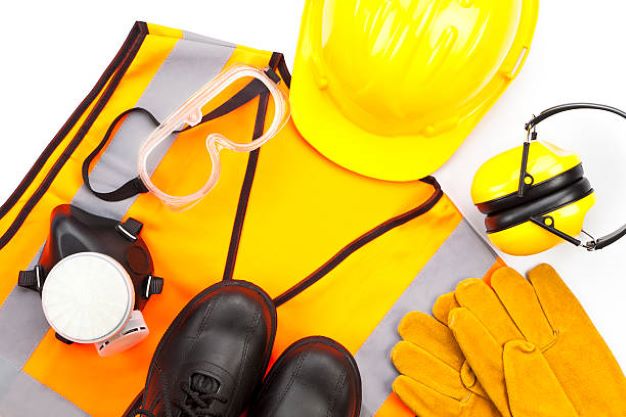
The following general types of safety are considered in the workshop.
1. Safety of self.
2. Safety of job.
3. Safety of machines tools.

Developing a solid safety plan is vital in workplaces, and recreational areas. It starts with a thorough risk assessment to identify potential hazards and assess their possible impact. Equally important is being well-prepared for emergencies, involving the creation of clear plans for different scenarios.
read more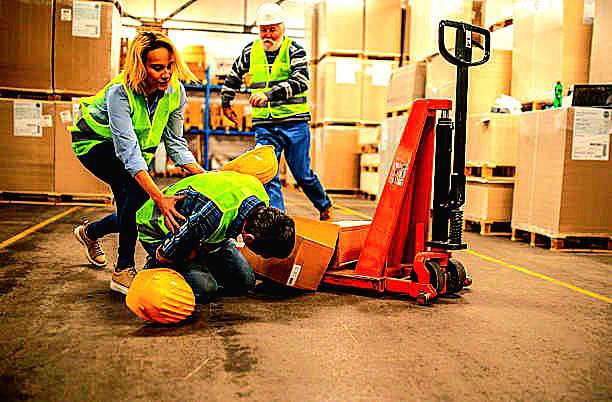
A large number of revolving, rotating, reciprocating and moving parts of machinery can besaid as the sources of danger and require guarding for protection against accidents.
read more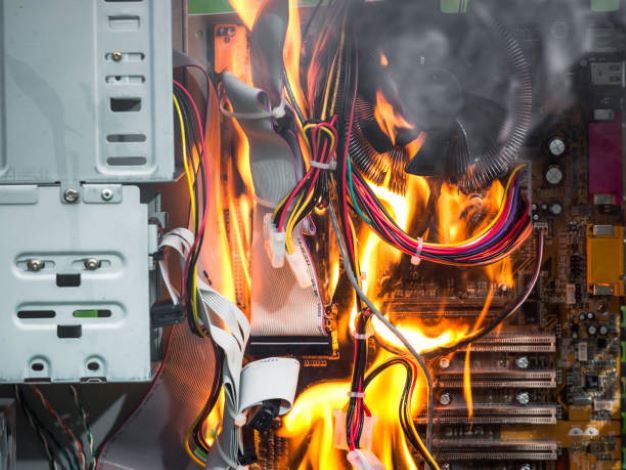
The accidents are unwanted events or mishaps that result in some sort of injury to men, material, machines, tools, equipment and semi or finished product hence, a loss to the whole establishment.
read more
Few safety measures commonly used in industries comprise of the proper safety guards for reciprocating machine components such as drop hammers, presses, shaper, slotter, power hacksaw, paper cutters etc., fencing of dangerous and rotating parts like revolving shafts,
read more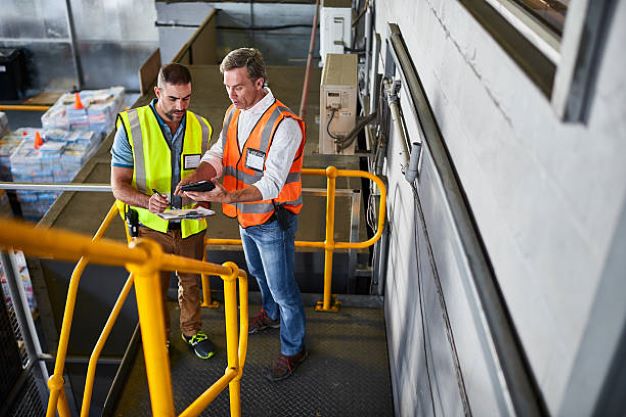
The common methods of safety are as follows:
1.Safety by construction or design.
2.Safety by position.
3.Safety by using fixed guards.
4.Safety by using interlock guards.
5.Safety by using automatic guards.

Safety Precautions while Working with Different Cutting Tools: Like as Make files, cutting, Chisels, Saws, Reamers, Tap and Dies, Abrasives.
read more
Safety Precautions while Working with Different hand Tools: Like as Screw Drivers, Wrenches, Hammers.
read more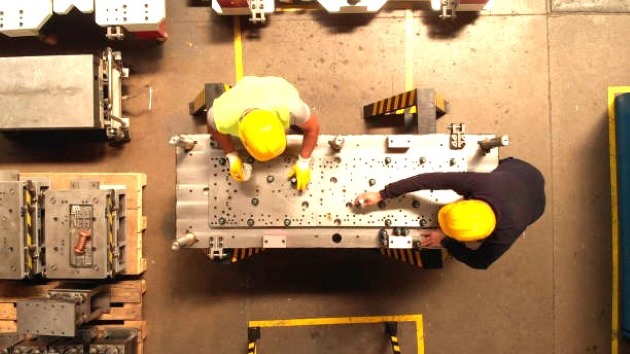
They must be strictly followed for safety. Specific safety guidelines for some of the machine process like lathe, drilling, shaping, planning slotting, grinding, milling, and finishing operations.
read more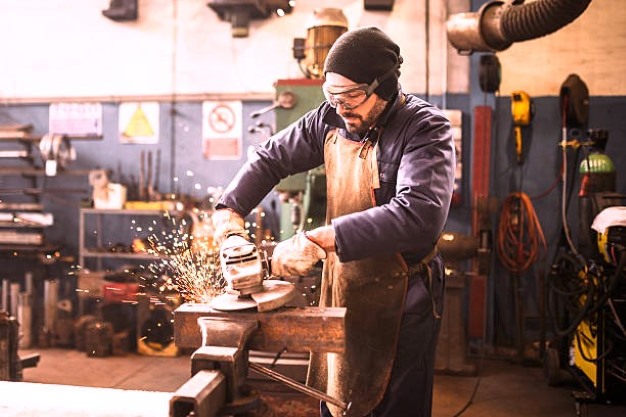
Replace Cracked Grinding Wheels: If you notice that the grinding wheel is badly cracked, replace it promptly. Damaged wheels can lead to accidents during operation.
read more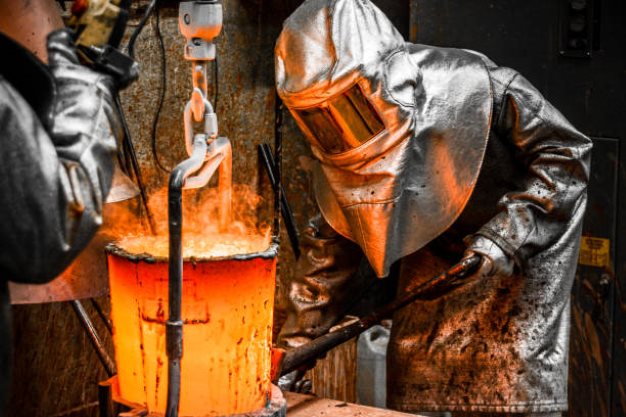
All foundry men should wear protective clothes, glasses, shoes, and gloves while handling molten metal for casting process.
read more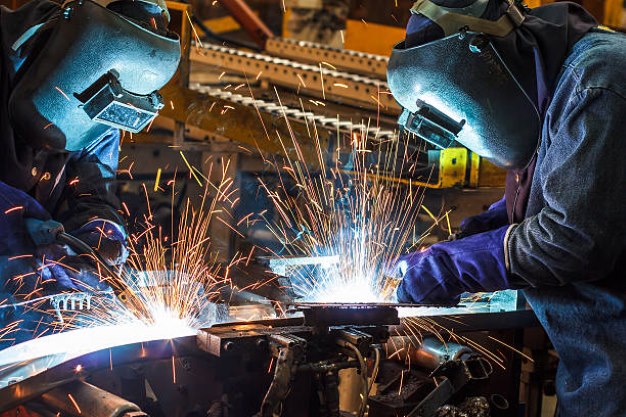
A welding shop is where metal pieces are joined using heat or pressure. Safety and proper equipment are essential for efficient welding processes.
read more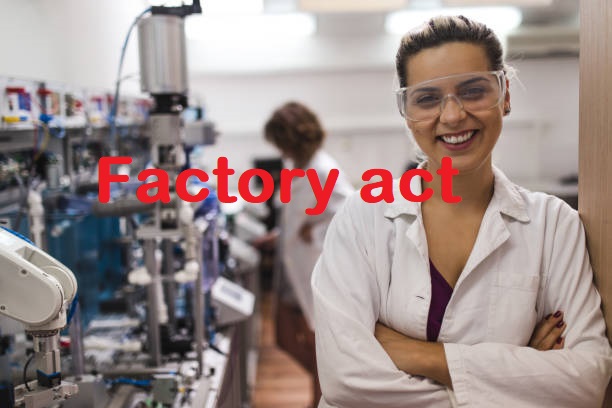
Factory Act is to safeguard workers from industrial hazards and ensure a secure and improved working environment, with specific provisions outlined for the fencing of machinery and other safety measures.
read more
In industry, an inquiry is normally ordered for electrical accident. Items carrying electricity should be properly insulated. Ageing of insulation withstand capacity and should not be allowed to leak current.
read more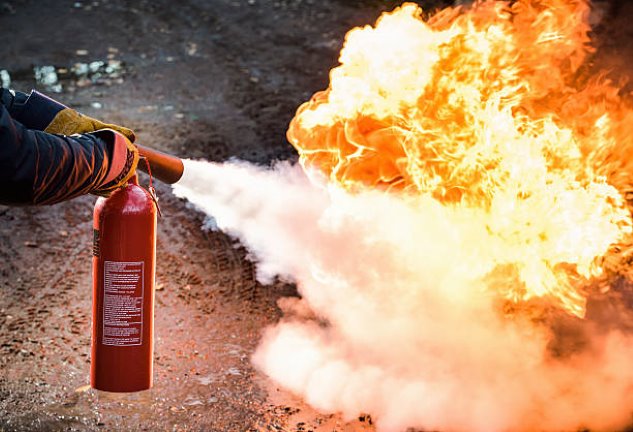
The main factors for combustions are presence of oxygen, availability of combustible materials and rise of temperature to the ignition point for the material The cause of fire accidents may be electric-short circuit.
read more
The main factors for combustions are presence of oxygen, availability of combustible materials and rise of temperature to the ignition point for the material The cause of fire accidents may be electric-short circuit.
read more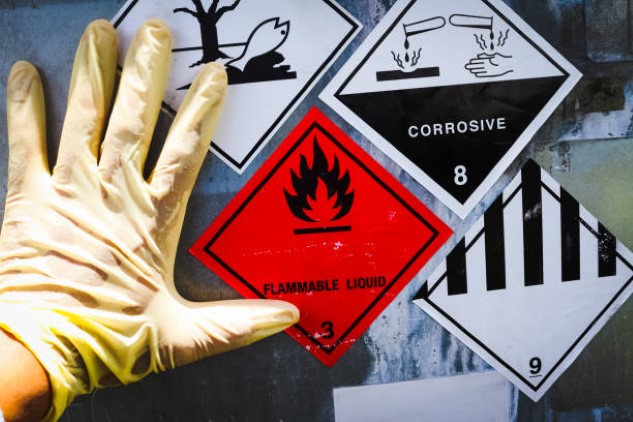
Effects of dusts, fumes, heat, noise and vibration due to hot and cold working of metals and crush and other injuries due to machine tools are discussed earlier.
read more
sometimes accidents may also occur in industries. After major or minor accidents, an injured worker requires immediate preliminary treatment in the absence of same his condition may become highly critical.
read more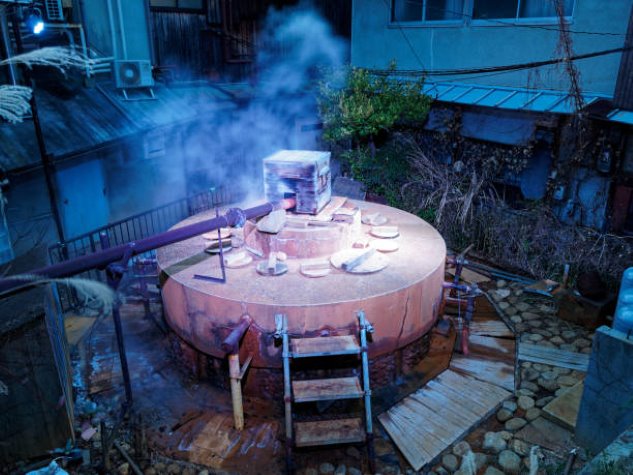
sA Cupola furnace is utilized for melting recycled metal or pig iron to manufacture diverse cast irons. Crucial factors in choosing cupolas include melting capability, shell diameter with or without lining, and spark arrestor.
read more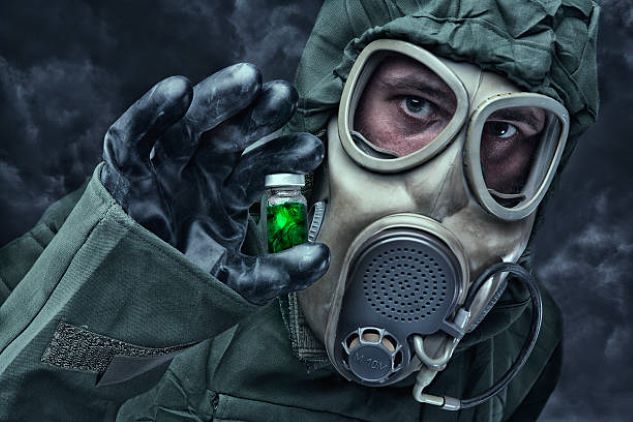
Antidotes are therapeutic agents used to counteract the toxic effects of specific xenobiotics. These are heterogenous group of substances consisting of pharmaceuticals, biological agents and immunoglobulin fragments.
read more
This Glossary of safety to help understand basic term of safety
read moreSafety Manufacuturing PPE Automation & Mechanization Friction Lubricants Classification of manufacturing advantage and dis. LPG 5S News fire prevention ci vs si engine Gear LPG vs petrol
To get first Notification: